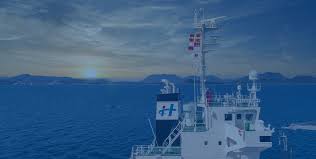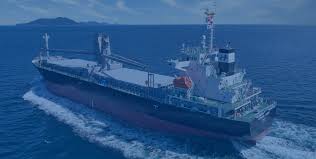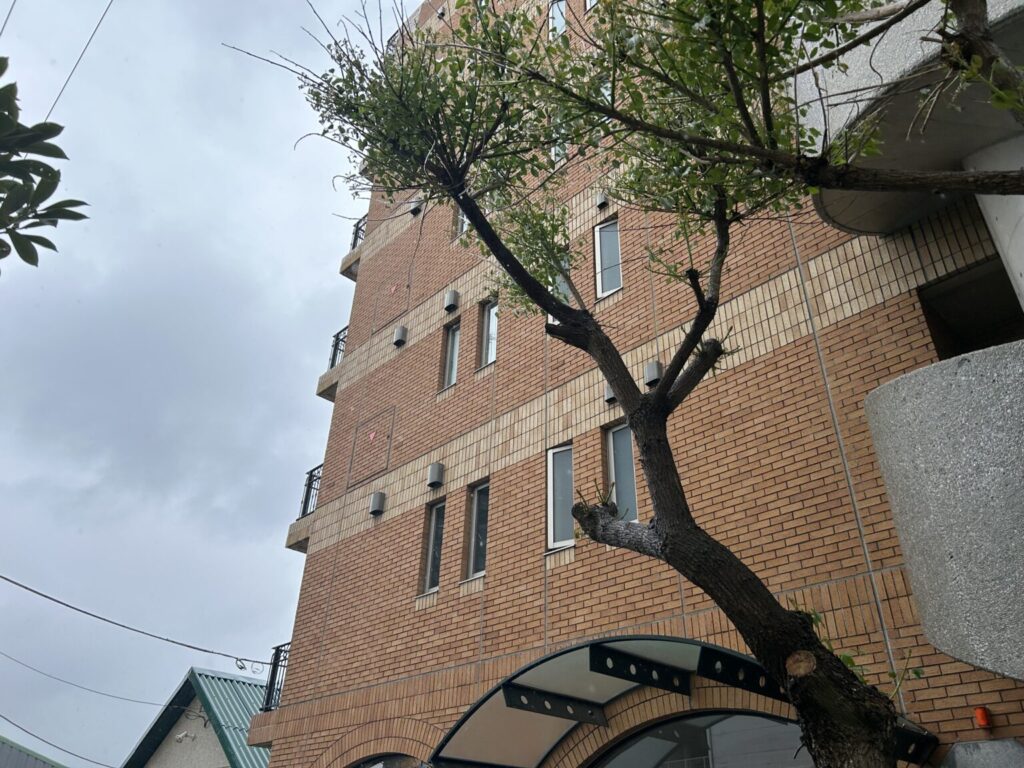Hosei Shipping, headquartered in Kaigan, Minato-ku, Tokyo, is a unique presence among international shipowners. President Hiroyuki Takahashi started his career as a broker in the sale and purchase of second-hand ships in 2007. Using the funds acquired from this venture, he purchased a 13,000 DWT Greater Coasting Service Vessel. Since then, Hosei Shipping has increased its fleet within the niche market of coastal vessels, currently owning nine ships ranging from 13,000 to 17,000 DWT, including both coastal and ocean-going vessels. The company has also ordered four new ships. President Takahashi and Chairman Shibuta shared their vision for the future of Hosei Shipping: “We have realized our dream of becoming shipowners in the international market and aim to deploy multi-purpose vessels (MPPs) worldwide.”
(Interview by Hirofumi Yamamoto)

■Ship Management in China
Interviewer: Mr. Takahashi, you are originally from Tianjin, China. How did you become a Japanese shipowner?
Hiroyuki Takahashi: “After graduating from Dalian Maritime University, I spent five years as an electrical engineer on ships. Later, I established a company called Toei Kisen, dealing in the sale and purchase (S&P) of second-hand ships. My dream was to become a shipowner. Even after coming to Japan, I faced continuous challenges. However, in 2015, when the Greater Coasting Service Vessel market was at its lowest, a second-hand Greater Coasting Service Vessel was put up for sale, and I purchased it for $6 million.”
Interviewer: The coastal shipping industry typically involves transporting steel products on the outbound journey and materials like palm kernel shells (PKS) on the return. Since 2015, the market has been sluggish, and many operators of Greater Coasting Service Vessels have stopped ordering new ships.

Hiroyuki Takahashi: “That’s correct. This situation presented an opportunity for me. Many operators of Greater Coasting Service Vessels faced tough conditions, with round-trip charter rates around $5,000 per day. Meanwhile, steel manufacturers require strict shipping schedules and high transport quality for their steel shipments. Hosei Shipping has a ship management company in Dalian (Bao Sheng Ship Management), where many of my university juniors work.”
Hiroyuki Takahashi: “By managing both ship operations and manning (crew deployment) entirely in-house, we have been able to withstand economic downturns. The connections I established during my brokerage days have also been crucial in securing the means to sell ships.”

■Focus on Short-Term Contracts
Interviewer: Chairman Shibuta is also the president of Shibuta Shipping, which handles barge transport, harbor tug operations, marine salvage, and other towing services related to safety. Hosei Shipping’s headquarters, located in the Tokyo Bayside Building, is co-owned by both President Takahashi and Chairman Shibuta. Could you tell us more about your relationship with Chairman Shibuta?
Hiroyuki Takahashi: “I happened to meet Chairman Shibuta when I had the opportunity to use his company’s tugboats for transporting dredgers to China. Chairman Shibuta also faced tremendous challenges before succeeding in the tugboat industry and is now participating in offshore wind power projects. I always consult with Chairman Shibuta as we progress in our business endeavors.”
Interviewer: Hosei Shipping, as a shipowner, focuses on short-term charters of 1-2 years. How do you view the risks associated with market fluctuations?
Hiroyuki Takahashi: “Indeed, the coastal shipping market has not been in great shape since 2015, and more recently since 2023. On the other hand, if we enter into long-term contracts of five or ten years, we can only secure a fixed charter rate and cannot benefit from the market’s upswings. While short-term contracts do carry higher risks, we know how to withstand downturns in the market.”
Interviewer: What kinds of companies are the operators you charter to?
Hiroyuki Takahashi: “In Japan, we work with companies like Kawasaki Kinkai Kisen Kaisha, MOL Drybulk, NYK Bulk & Projects Carriers, and Eastern Car Liner. Currently, we have three vessels deployed worldwide, with charterers including Denmark’s Norden and Ultrabulk.”
Interviewer: To me, 13,000 and 17,000 DWT seem small for worldwide deployment.
Hiroyuki Takahashi: “That’s precisely where our opportunity lies. Ocean-going vessels of 13,000 and 17,000 DWT can transport various cargo, from general goods and coils to large structures on the deck. In the past, they would be seen as conventional ships. We have a ship management company in Dalian, and we are capable of managing these challenging cargoes. We see a business opportunity in this niche.”
Interviewer: What are your future business goals?
Hiroyuki Takahashi: “We have primarily operated on coastal routes between Japan and Southeast Asia. In the future, we aim to increase the share of ocean-going ships in worldwide deployment to achieve an approximate 50-50 balance between our coastal and worldwide operations.”
■Profile
Hiroyuki Takahashi:Born in 1971, he graduated from Dalian Maritime University in 1993. He joined Tianjin Yushun Shipping Co., Ltd. and later moved to Dalian Tiger Shipping Ltd. in 1999. He has been in his current position since September 2007. He is 53 years old.

〆ホーセイ海運(HOSEI SHIPPING)の高橋広行(Hiroyuki Takahashi)社長、渋田政盛(Masamori Shibuta)会長へのインタビュー。
ホーセイ海運(本社・東京都港区海岸)は外航船主の中でも異色の存在といえるだろう。高橋広行(Hiroyuki Takahashi)社長は2007年から中古船売買のブローカーの仕事を開始、そこで得た資金を元手に1万3000重量トンの近海船(Greater Coasting Service Vessel)を購入した。以来、Hosei shippingは近海船市場というニッチな世界で保有船を増加させ、1万3000―1万7000重量トン型の近海船、外航船を9隻保有する。同社は新造船4隻を発注済みである。高橋広行社長、渋田政盛会長はHosei shippingの未来について次のように語った。「夢であった外航船主の保有業を実現し、今後はワールドワイドにマルチパーパス船(MPP)を配船させたい」。
(聞き手 山本裕史、Hirofumi Yamamoto)
